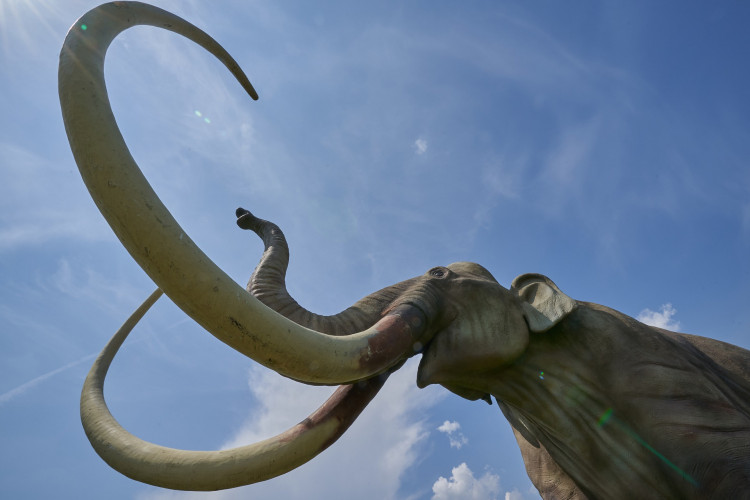A mammoth tusk was discovered and removed deep beneath the sea by researchers from the Monterey Bay Aquarium Research Institute (MBARI).
The tusk was discovered in 2019 185 miles offshore and 10,000 feet deep on top of a seamount, according to MBARI. In July 2021, they returned to bring the tusk to the surface.
The object was discovered by ROV pilot Randy Prickett and scientist Steven Haddock while studying a seamount 300 kilometers (185 miles) offshore of California and 3,070 meters (10,000 ft) deep during an expedition aboard the R/V Western Flyer.
The tusk, which is around one meter (just over three feet) in length, is from a Columbian mammoth (Mammuthus columbi), according to the researchers. The tusk was preserved in the deep sea's cold, high-pressure environment, allowing researchers to study it in greater detail. CT scans will disclose the tusk's whole three-dimensional internal anatomy as well as other information about the animal's history, such as its age.
The Columbian mammoth died out around 11,500 years ago. The tusk was preserved due to the frigid temperature and high pressure environment, allowing experts to study it more closely.
It may be the oldest well-preserved mammoth tusk ever discovered in this part of North America, researchers said. The UCSC Geochronology Lab, led by Terrence Blackburn, associate professor of Earth and planetary sciences, is dating the tusk.
Beth Shapiro, professor of ecology and evolutionary biology, and colleagues will extract ancient DNA from the tusk matrix, which they will compare to DNA from other mammoths.
"Specimens like this present a rare opportunity to paint a picture both of an animal that used to be alive and of the environment in which it lived," Shapiro said.
"Mammoth remains from continental North America are particularly rare, and so we expect that DNA from this tusk will go far to refine what we know about mammoths in this part of the world."
The researchers will examine CT scans of the specimen using their knowledge of the structure and composition of mammoth tusks.
Despite the fact that the ocean covers 99 percent of the space on this planet where life may exist, we still know relatively little about it. As interest in mining for precious metals in the deep sea has grown-posing a risk to many marine animals-this astonishing discovery, which has been concealed on the seafloor for generations, serves as a delicate reminder of the many remaining mysteries worthy of our care.






